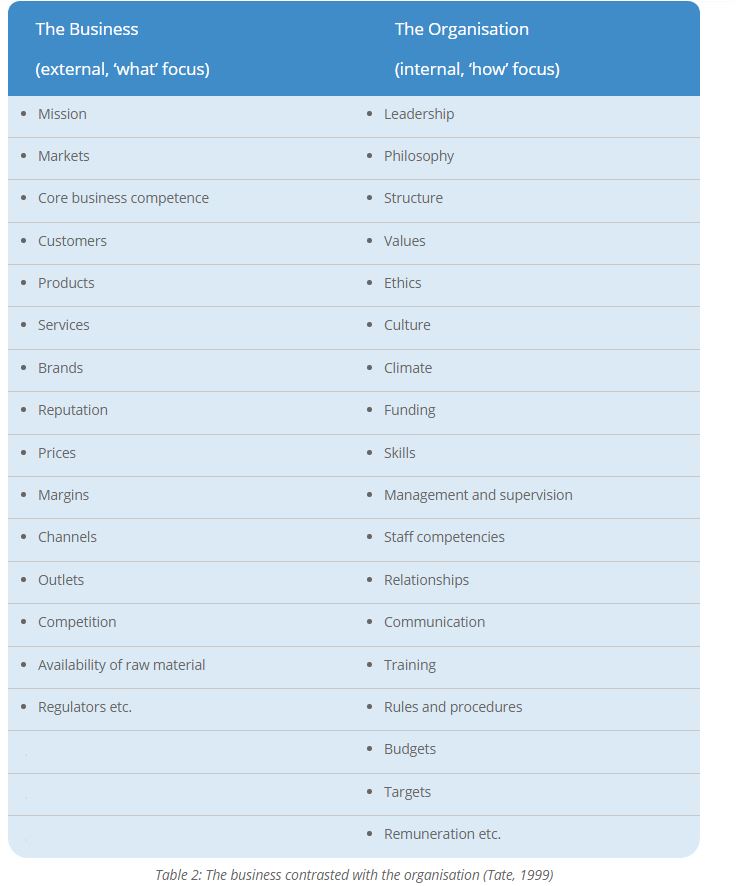The word ‘organisation’ is commonly used as a substitute for company, firm, corporation, enterprise, partnership and institution, as well as being used as a synonym for ‘the business’. This umbrella term ‘organisation’ conveniently spans the public, private and not-for-profit sectors, and for this reason I use ‘organisation’ in this way in this book. Yet this popular usage glosses over an important distinction between the business and the organisation.
The business is essentially outwardly focused and profit driven. Business factors are concerned with why the company exists and how it survives. A company’s business model answers the question ‘How will this company make money out of what it is doing?’ By contrast, the organisation is the set of internal arrangements at the service of the business. These internal organisational arrangements enable a soundly conceived business to succeed. The organisation model answers the question ‘What is the best way of organising ourselves to serve the business objectives?’
The table below lists some of the factors that comprise the two halves of the company or institution: the business and the organisation.
(external, ‘what’ focus)
(internal, ‘how’ focus)
- Mission
- Leadership
- Markets
- Philosophy
- Core business competence
- Structure
- Customers
- Values
- Products
- Ethics
- Services
- Culture
- Brands
- Climate
- Reputation
- Funding
- Prices
- Skills
- Margins
- Management and supervision
- Channels
- Staff competencies
- Outlets
- Relationships
- Competition
- Communication
- Availability of raw material
- Training
- Regulators etc.
- Rules and procedures
.
- Budgets
.
- Targets
.
- Remuneration etc.

But should one think about the business ahead of the organisation that is there to serve and support it, or the other way round? The answer is that there is no fixed rule that always favours one over the other. A case can be made for both these sequences depending on the context. The key point is to recognise the difference between the business and the organisation and understand how a systems perspective and an improvement agenda are affected by that simple division.
Based on Chapter 1, ‘Preparing the ground’ in The Search for Leadership: An Organisational Agenda.
